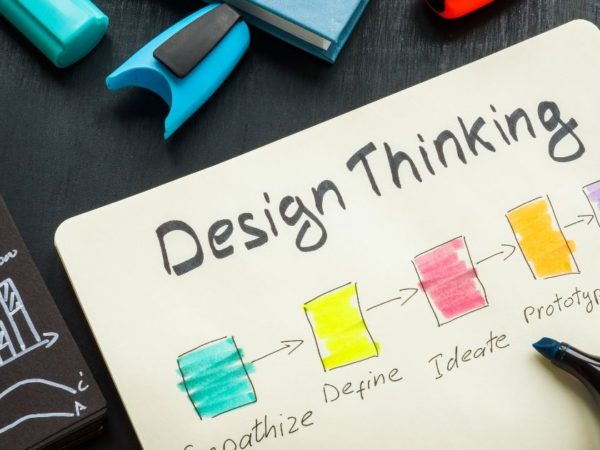
The rise of remote work has revolutionized the way technology is delivered, presenting both challenges and opportunities for agile project management.
The term “home office” is now becoming a standard, while just a few years ago, it was a tabu that the majority of the corporate companies didn’t want to break.
I still remember my managers saying (two decades ago) that there is no way that the home office will be something to tolerate, ever.
But here we are, fast forward into the post-Covid pandemic age. Refusing the home office as an option of any form in the interviews means instant candidate turnaround.
We will explore the impact of remote work on technology delivery and delve into the strategies, tools, and best practices that can enhance collaboration and communication in agile teams. Let’s uncover the secrets to successful remote technology delivery.
The Rise of Remote Work and its Impact on Technology Delivery
The advent of remote work has transformed the traditional office setup, allowing teams to work from anywhere worldwide. This shift has profoundly impacted technology delivery, enabling organizations to tap into a global talent pool and leverage diverse perspectives.
Suddenly, you might have coworkers from locations far away from the working office location. People don’t need to move that much for work, and companies have a larger pool of people to choose from.
However, it has also introduced new challenges, such as managing distributed teams, ensuring effective communication, and maintaining productivity.
Distributed Teams
One of the key challenges of remote work is managing distributed teams. When team members are spread across different locations, time zones, and even cultures, it can be challenging to ensure effective collaboration and coordination.
Communication becomes crucial, as miscommunication or lack of communication can lead to delays, misunderstandings, and decreased productivity.
Interaction and Socialisation
Another challenge is maintaining a sense of team cohesion and camaraderie. In a traditional office setting, team members have the opportunity to interact face-to-face, build relationships, and foster a sense of belonging. In a remote work environment, it is more difficult to establish and maintain these connections. This impacts team dynamics and overall productivity.
Agile project management methodologies, such as Scrum or Kanban, can help address these challenges and ensure successful technology delivery in remote settings. Agile methodologies emphasize frequent communication, collaboration, and adaptability, making them well-suited for remote work environments.
Why Agile Wins in Remote Setup
Firstly, agile methodologies promote regular and transparent communication. Daily stand-up meetings, where team members share updates and discuss any challenges or roadblocks, help keep everyone on the same page. This ensures that any issues are identified and addressed promptly, minimizing delays and maximizing productivity.
Additionally, agile methodologies encourage open and honest communication, creating a culture of trust and transparency within the team.
Secondly, agile project management provides a framework for effective collaboration. Agile teams work in short iterations (sprints), where they focus on delivering incremental pieces of functionality. This leads to continuous feedback and collaboration. Breaking down complex projects into smaller tasks is exactly the best-fit attitude for remote teams.
Agile delivery emphasizes self-organization and autonomy. Remote work requires a certain level of independence and self-discipline, and agile project management empowers team members to take ownership of their work.
Technology delivery can’t live today without the constant evolution of the team in terms of seniority and technology skills. You can’t possibly achieve this with a team consisting of people who have no close relation to each other.
Challenges and Opportunities of Using Agile Project Management in Remote Settings
Remote settings present unique challenges that require careful consideration. You might wonder how to manage time zone differences, cultural nuances, and the need for clear communication channels in such a setup.
And maybe you shall seek opportunities that arise from such an environment, such as increased autonomy, improved work-life balance, and enhanced collaboration. Let’s have a look at those topics in a bit more detail.
#1. Time Zone Differences
One of the significant challenges in remote work environments is managing teams across different time zones. Just imagine a team consisting of people crossing three or more time zones, such as EST, IST, and CET.
Having effectively just two to four hours a day in a time window where everybody from the team is present can lead to communication delays. It’s difficult to coordinate meetings and collaborate effectively.
However, agile project management can help mitigate this challenge by promoting asynchronous communication and flexible work arrangements.
By leveraging tools like project management software, virtual collaboration platforms, and shared calendars, you can coordinate their work and ensure that progress continues even when team members are in different time zones. The ultimate goal is to allow people to work during their most productive hours while still maintaining alignment with the project goals.
#2. Cultural Nuances
Remote work often involves collaborating with team members from diverse cultural backgrounds. Cultural nuances can impact communication styles, decision-making processes, and work expectations. You shall be aware of the importance of cultural diversity and encourage open and inclusive communication.
Many organizations have these days this topic as mandatory training for all employees, and I believe the main reason is exactly the rise of remote setup.
Agile methodologies implicitly give another bonus to the case as they promote regular feedback and retrospectives. This provides opportunities for team members to share their experiences and learn from each other’s cultural backgrounds.
#3. The Need for Clear Communication Channels
Clear and effective communication is crucial in remote work environments. Without face-to-face interactions, it becomes essential to establish clear communication channels to ensure that information flows smoothly and everyone is on the same page.
And again, that’s why Agile projects can be so effective in this setup. Practices such as daily stand-up meetings, virtual collaboration tools, and dedicated and scheduled communication routines are essential.
Without them, you might find yourself stuck in the same spot without significant progress for days, if not weeks. And if that happens, you aren’t just greatly losing money, but also teaching the people bad habits where the productivity decrease is suddenly a norm for expansion.
But this is nothing new; you can see the same pattern even in traditional onside waterfall project setups (I would argue with an even stronger presence).
That leads us to opportunities you might identify and explore.
#4. Increased Autonomy
Remote work provides an opportunity for increased autonomy and self-management. If your way of working up until now was micro-managing everybody in the team, then forget all of it right away. Instead, empower individuals to take ownership of their work and make decisions within their areas of expertise.
Leverage agile practices such as self-organizing teams, where individuals have the freedom to plan and execute their work in a way that best suits their skills and preferences.
I know, for a traditionalist, this is hard to imagine, not even to execute. But that’s the future you shall deal with. People need to naturally understand that with greater autonomy comes also greater responsibility for the actions they do. They won’t jump on that train if they feel they are constantly controlled or (shall I dare to say) managed.
#5. Improving Work-Life Balance
One of the key advantages of remote work is the potential for improved work-life balance. Agile project management methodologies promote a focus on outcomes rather than hours worked, this is crucial to understand.
Remote teams can leverage agile practices such as flexible work hours, timeboxing, and prioritization techniques to create a healthy work-life balance. This flexibility is important, especially in remote settings.
When you stay home for work, you need to assume the home will impact your work. If you work from the office, you don’t care if your dog is chasing a nice pheasant in the yard because you just don’t know. But if you are home, then you have to act :). And that’s fine, as long as your focus is on the outcome and not on the time.
#6. Enhancing Collaboration
Contrary to popular belief, remote work can actually enhance collaboration when supported by agile project management practices. Agile methodologies emphasize frequent communication, collaboration, and feedback loops.
Tools like video conferencing and online whiteboards have the advantages of real-time collaboration. It’s a fact you need to get used to them, and not everybody will like it initially. But that is the way how you overcome the physical distance and create a strong sense of teamwork and collaboration.
Strategies for Effective Remote Collaboration and Communication in Agile Teams
Effective collaboration and communication are the cornerstones of successful remote technology delivery. From establishing goals and expectations to leveraging video conferencing tools and virtual whiteboards, we will explore practical techniques that can bridge the physical distance and create a sense of a real team.
#1. Setting the Right Goals and Expectations
This was never an easy task. However, clear goals and expectations are essential for effective remote collaboration. When team members are working remotely, it becomes even more crucial to have a shared understanding of project objectives, timelines, and deliverables. Here is what you can do as a starter:
- Define project goals and communicate them to the whole team, not just to some individuals.
- Break down larger goals into smaller tasks with specific deadlines.
- Use project management tools of your choice to track progress.
- Regularly communicate updates and milestones to keep everyone informed.
- Encourage open communication and provide a platform for team members to ask questions.
And that’s it. With this in place, no one can ever approach you to say, “I have no clue what we are doing here or where we are heading to”. You would be surprised, but this is exactly the type of feedback I hear quite often from the remote team where the environment is not set right.
The best part about that is that people are not afraid to name it this way. Simply because the remote setting naturally creates that sense, this kind of problem is standard.
#2. Video Conferencing and Whiteboards
Video conferencing tools and online whiteboard software are invaluable resources for remote collaboration. They enable face-to-face communication, visual presentations, and real-time collaboration. Here are some practical techniques to leverage these tools effectively:
- Schedule regular video meetings to facilitate communication and maintain a sense of connection among team members. Not too often, but expect everybody to turn on the camera.
- Use video conferencing for important discussions, brainstorming sessions, and decision-making processes.
- Share screens and use virtual whiteboards to collaborate on ideas, sketch out concepts, and visualize workflows.
- Record important meetings or sessions for team members who may not be able to attend in real time.
- Encourage active participation and engagement during video meetings.
This is how you bridge the physical distance and create a collaborative environment for the whole team.
In this segment, we will explore a range of tools and technologies that can enhance productivity and streamline collaboration in remote teams. It’s not that much about a concrete tool that you chose for the project, but there are a few areas that you shall definitely cover with such a tool, if only for automation purposes.
#1. Project Management Software
Project management software plays a crucial role in facilitating remote technology delivery. These tools provide a centralized platform for teams to plan, track, and collaborate on projects. Some popular project management software options include:
- Asana – a versatile tool that allows teams to create tasks, set deadlines, assign responsibilities, and track progress.
- Trello – a visual tool that uses boards, lists, and cards to help teams organize and prioritize tasks.
- Jira Software– a robust tool specifically designed for agile teams, offering features such as sprint planning, backlog management, and issue tracking.
#2. Version Control Software
Version control systems are essential for remote technology delivery, especially when multiple team members are working on the same codebase. You can track changes, collaborate on code, and manage different versions of the software. Some widely used version control systems include:
- Git – a distributed version control system that enables teams to collaborate on code, track changes, and manage branches effectively. Each developer has its own full copy of the code repository locally and synchronizes that with the master code with push, pull and merge operations.
- GitHub – a web-based hosting service for Git repositories.
- Bitbucket – a proprietary Git-based version control system that offers similar features to GitHub, including code collaboration and issue tracking.
#3. Collabaration Platforms
Virtual collaboration platforms provide features such as video conferencing, instant messaging, file sharing, and document collaboration. Some popular virtual collaboration platforms include:
- Microsoft Teams – a comprehensive collaboration platform that combines chat, video meetings, file sharing, and integration with other Microsoft tools.
- Slack – a real-time messaging platform that allows teams to communicate, share files, and integrate with various third-party tools.
- Google Workspace – a suite of productivity tools, including Google Meet for video conferencing, Google Drive for file sharing, and Google Docs for collaborative document editing.
Best Practices for Successful Remote Technology Delivery
Drawing from real-world experiences, I’d like to share some lessons learned and best practices for successful remote technology delivery. No setup is perfect, and the fact is you can learn from every possible working setup, not just from the perfect ones. But some of the setups you don’t want to repeat :).
#1. Team Dynamics
Encourage team members to communicate regularly and openly, using the tools you have available on your project. If people don’t use the tools, they are giving you no value, and you should evaluate the reasons why this is the case.
Every meeting shall be a collaboration time, not just a call with one speaker and the rest passively listening. If that happens, you have on the call people working in parallel on something else, as is the current topic of the call. This, of course, leads to ineffective team calls, and people will start to wonder why we have so many calls in the first place. It will become just a waste of time.
Collaboration is the key. Think about it as office time, those situations when you used to usually meet and create something productive. It doesn’t matter if it was a dedicated meeting or a coffee chat. The output matters. And if it is also fun, then that’s a nice bonus.
#2. Risk Management
Identify potential risks early and don’t wait for their resolution. Risks shall not be solved on the scheduled meetings. You shall resolve them continuously and use those calls only to report the current progress.
Continuously assess their impact and likelihood and provide updates to your tools. Consider factors such as technology issues, communication challenges, and dependencies on external parties.
Always create contingency plans to mitigate identified risks. This is something that you should figure out as soon as you identify the risk itself. It may even involve having backup communication channels, alternative work arrangements, or contingency budgets.
Regularly monitor and review risks to ensure they are being effectively managed. Adjust plans as needed to address emerging risks.
#3. Stakeholder Engagement
Keep your stakeholders informed about project progress, challenges, and achievements through regular updates. Stakeholder is like a remote part of your remote team :). It gives the overall purpose to your team. It’s very easy to lose stakeholder’s interest in the remote setup.
Depending on the conservatism level of the stakeholders, it might be the case that you need to keep at least some onside meetings only to keep that interest alive.
Actively seek feedback and input from stakeholders to ensure their needs and expectations are being met. This can be done through surveys, interviews, or focus groups.
Promptly address any concerns or issues stakeholders raise and manage their expectations by providing realistic timelines and deliverables.
Wrapping Up
Agile project management in remote technology delivery is a dynamic and evolving field that requires a careful balance of technical expertise and effective collaboration. By embracing the challenges and opportunities presented by remote work, you can leverage agile methodologies to deliver innovative technology solutions.
Armed with the strategies, tools, and best practices discussed in this article, you are well-equipped to navigate the complexities of remote technology delivery and achieve success in the ever-changing digital landscape.



